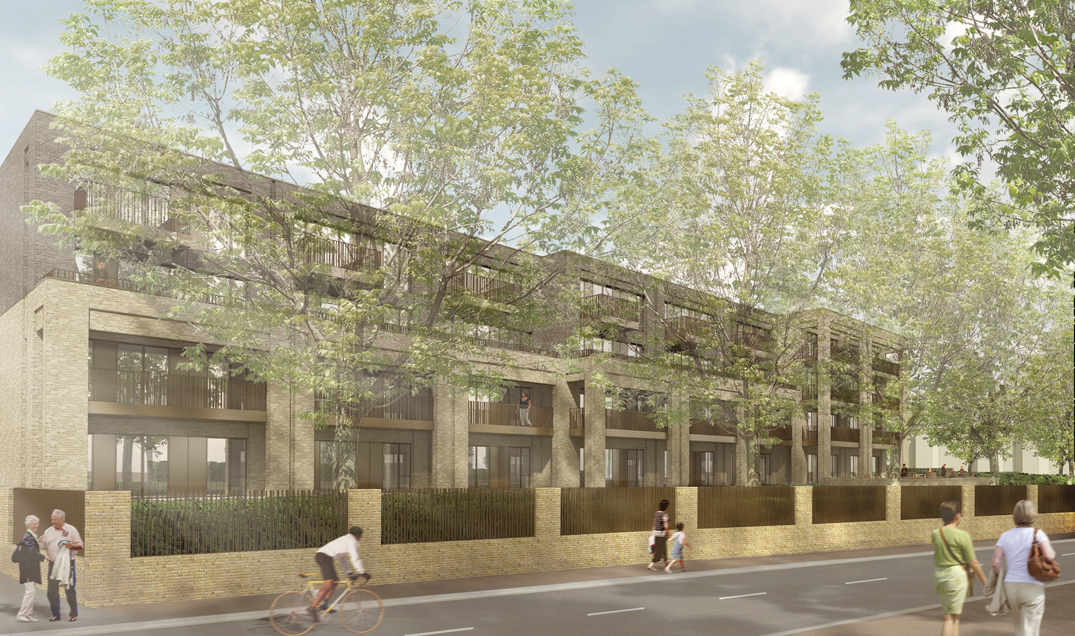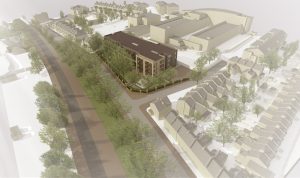
The construction phase of One Housing Group’s latest extra care scheme in north London is well underway. Resident involvement and feedback from the local community has been instrumental in influencing the design of the building, as Michael Connolly finds out.
The Lorenco House extra care scheme, Pretoria Road, Tottenham is an independent living home for over 55s. The scheme will be run under One Housing Group’s Season brand and will offer homes to residents nominated from Haringey Council’s housing list. The home will comprise 52 units — 44 one-bedroom and eight two-bedroom apartments and is expected to be finished later this year.
An important aspect of this development is the decision to involve the local community in the building process. The One Housing Group team consulted with local residents as well as councillors during the construction of the home. Evenings were held where people could ask questions and discuss any issues about the new building. For example, local residents were keen for the trees at the front of the building to remain and not be cut down during the development.
Max Gregory, project manager at One Housing Group, explains: “Although that was Haringey Council’s stipulation, it’s the kind of thing that’s always raised before we get going— no one likes to see big mature trees chopped down, it’s always first on the list.”
Other examples include a project website to follow the build and the names and numbers of people working on the site put on the hoarding surrounding the new flats for residents to contact if they have any queries. One Housing Group has worked with Galliford Try on other projects including another extra care scheme in north London. The contractor’s extensive experience of building extra care facilities made them the right fit for this project.

There are a number of measures implemented to accommodate the future residents of the home, as delivering a property for the over 55s where residents care level needs will vary, requires careful thought and planning. These include a Tunstall system for access to the building via a key fob, as well as speech modules in the common areas and in each bedroom, living room and hallway of every flat.
The speech modules were specified for older residents should they need to contact staff if, for example, there is an emergency situation. There are also pull chords in the bathrooms for residents who may have had a fall and require assistance. The entrance door meets Secured by Design standards, however the housing association does not want the residents to feel like they are under lock and key so they are given a key fob for easy access into and out of the property.
Special design
Residents with dementia are catered for with the colours of the floors and ceilings far enough apart on the LV scale to enable them to recognise the difference between walls, kitchens, and worktops. Different coloured walls and carpets are designed for residents to be able to navigate their way around the building easier. Varying types of handles on cabinets with clear fronts and not using matte finishes instead of shiny finishes are all designed to help residents with dementia.
Max comments: “We’ve even done little subtle things like the shower grab rail that in any of our own homes would come off the wall if we were to fall over and grab it, because it is actually a grab rail here, we fixed in some harder points behind the wall in the plaster board.”
The bedrooms for the residents with dementia are all located on the ground floor near the staff office at the front of the building. The offices have been placed at the front of the building to enable the nine day time carers to be able to watch over the residents.
Energy efficiency
For One Housing Group it was important that the building be constructed to high standards of energy efficiency. Solar PV panels installed on the roof and a communal boiler system will help contribute to lower energy bills for the residents in the property. The fabric first approach has been applied on this project and will result in minimum air leakage from windows and doors, contributing to high U-values. The building also includes underfloor heating that maintains a consistent ambient temperature, with the added benefit of negating the need for radiators, which residents could accidentally knock into and hurt themselves.
Jonathon Hale, contracts manager at Galliford Try adds: “All the services are highly insulated and efficient so it requires minimal use to heat the building.”
Local partnership
One Housing Group has worked closely with Haringey Council on this project and a similar care scheme across the borough. Examples of the relationship with the council involves local people being nominated as potential residents and using local labour on the construction of the site. Haringey also signed off the external materials used on the project such as the colour of the bricks and the windows in order for the scheme to fit the local vernacular.
Jonathon notes: “We are looking to employ local bricklayers and carpenters all the way through to local cafes for site meetings where we’ll use local caterers and try and keep the money in the borough.”

Housebuilding
With the 1% rent reduction hitting housing associations for the next four years, there is an increasing pressure to make new projects successful. Previously the social housing provider received grants of up to 100%, on occasion, to cover the full cost of the build, and now it receives no grants at all. Max notes: “The 1% rent costs One Housing, and we’re sort of a medium sized player, 10s of millions over the next four years.”
The increase in the value of land is also making it more difficult for housing associations to acquire land to build on; particularly in London and the surrounding areas. Jonathon adds: “In London, there’s a massive shortage of housing. So we’ve got to keep building. We’ve got to build affordable homes, for local people.”
Both Jonathon and Max agree that the relaxation of planning law will help contribute to building new homes as this can potentially delay getting projects off the ground. The project on Pretoria Road is funded by a combination of Mayor’s Care and Support Specialised Housing Fund and One Housing Group’s £3.4m subsidy from profit made by selling private units. The fund is designed to help provide Londoners with well-designed accessible homes. The extra care home will include a hairdressers, canteen, assisted bathrooms and a guest room, as well as a bar, and is set for completion in October/November time this year.








